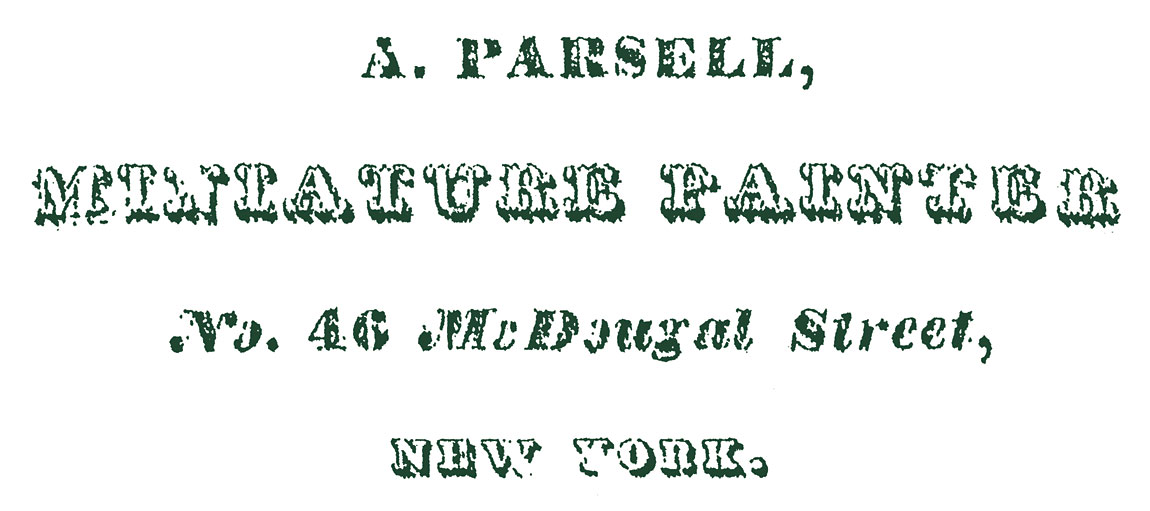But it's a safe bet that none of the portraits will be as small as those painted by Hillsborough's most noted portrait artist, Abraham Rykers Parsell. Born in Neshanic in 1791, the second of the six children of Oliver Parsell and Lucretia Williamson, Parsell moved to New York as early 1820 to set up shop as a miniature portraitist.
The first interesting thing about Parsell is that he chose to forsake the traditional career path of the portraitist in the pre-photographic era, which would be to constantly travel. The fact that he was able to sustain a career in New York, competing with classically trained artists, for almost forty years, is proof of his talent and the quality of his output over time.
The second interesting aspect of Parsell's art is that not only did he apply paint to the front of the 2-1/2 by 2-1/4 inch translucent piece of ivory used for the portraits, but he also painted skillfully on the back side, which, according to Vincent DiCicco and Howard P. Fertig in their article about Parsell for Antiques and Fine Art, produced "muted tonalities on the front of the image" and illustrated "clear understanding of the medium in which Parsell chose to work".
Not much is known today about Parsell. He married Mary Richards in 1819 and had three children, only one - John - surviving infancy. He worked mostly in lower Manhattan. As an adult, John joined Abraham at work in his studio, but it isn't known how much involvement he had in the actual painting if any.
Abraham Parsell died in 1856 and is buried in his wife's family's burial ground in Springfield, New Jersey.

























